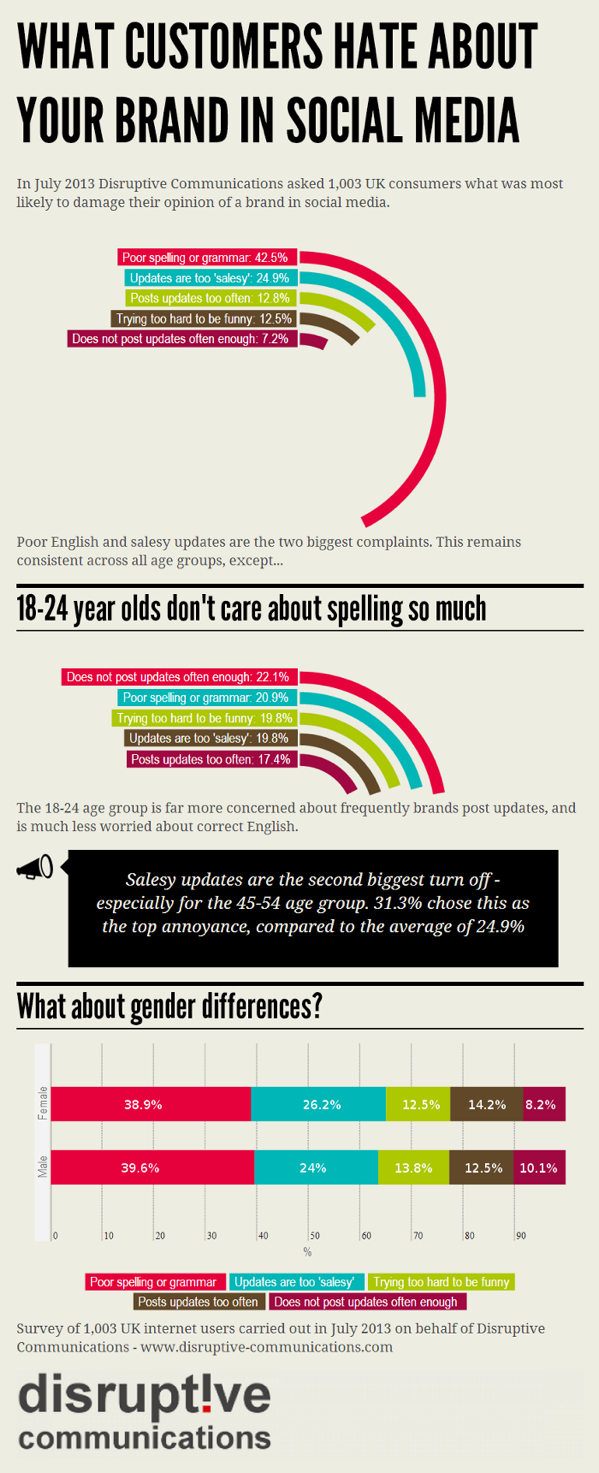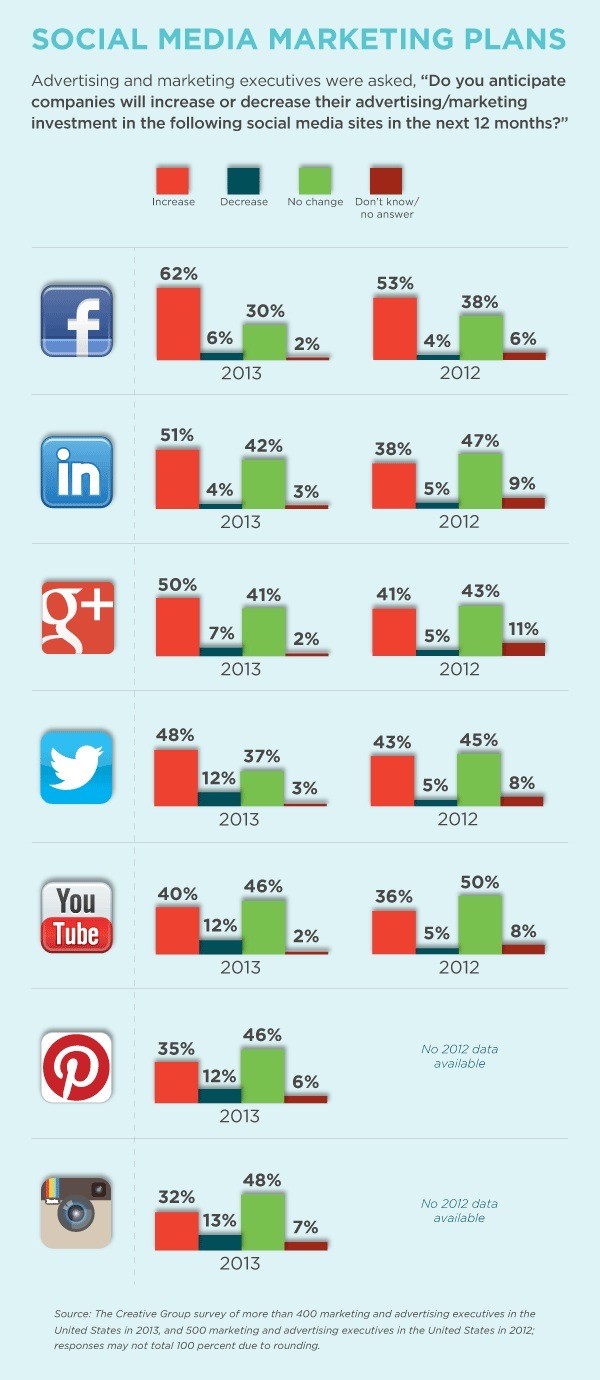What customers hate about brands on social media (Infographic)
In many seminars I have been asked this question and hey, the guys from ExactTarget CoTweet have given an answer some months ago: What annoys people when they follow brands on the social web, and what makes them like brands? Discounts we knew it. Well, if you still think it is the frequency and too many updates on promotions, you might be right but it is coming worse.
Just imagine you publish a status update that carries some wording in poor typo or, even worse, a grammar mistake. If you read this infographic, you might get the impression that sending out hundreds of status updates asking people to go in shops, to buy tech gadgets, or tell them to buy those online, makes people not turn away from loving your brand. It is actually not that bad, it seems…
However, if you loose the appropriate tonality in your social accounts and a certain kind of quality control gets lost like poor spelling mistakes, then your brand might face a challenge in terms of reputation and followership.
“A lot of people talk about the need for brands to be less formal when they communicate through social media, but this survey shows that there is a danger in letting standards slip too far.” Lance Concannon, Director of Disruptive Communications.
“The findings also illustrate that you can’t take a one-size fits all approach in social media. Younger consumers clearly have different expectations and priorities – overall people said that not posting updates frequently enough wasn’t a major concern for them, but the 18- to 24-year-olds listed it as their most important issue”, says Concannon whose company put together the infographic.
How about you? What do you think annoys people when brands are on social media. Maybe it still is your hundreds of status updates on a day?








